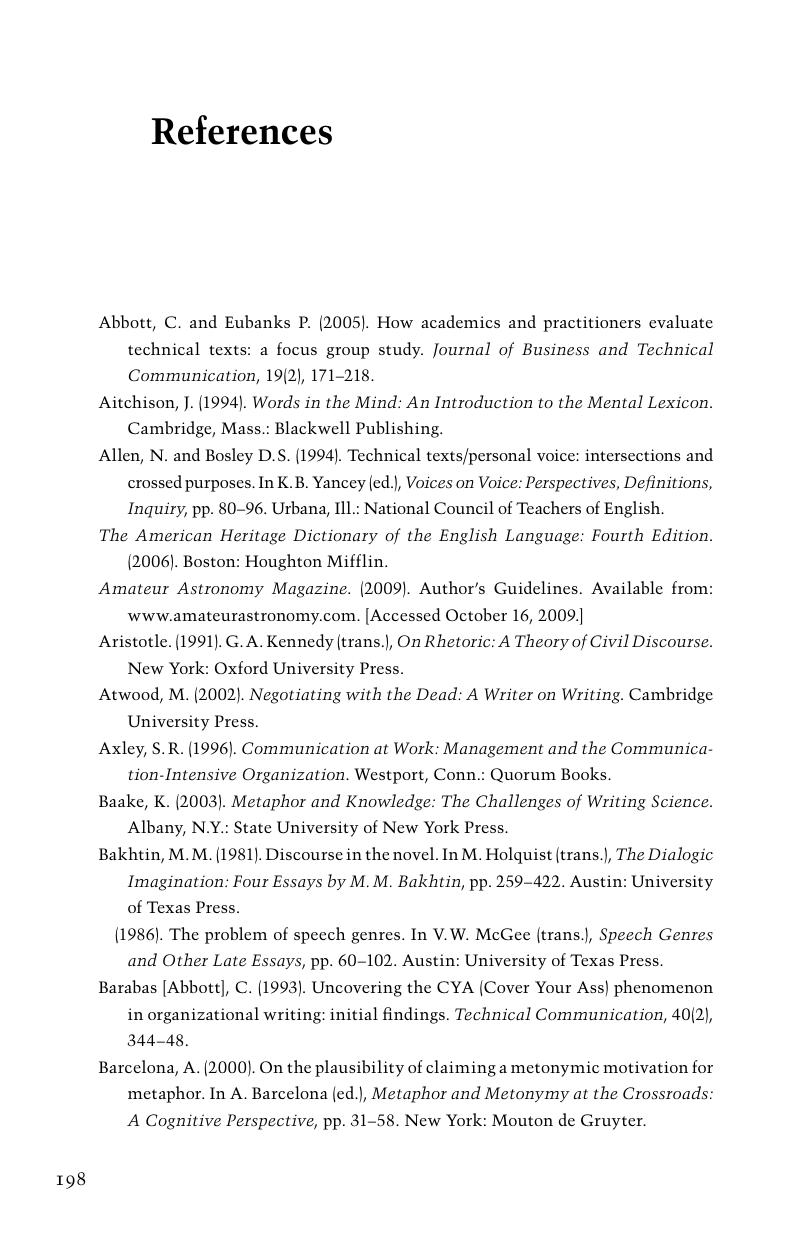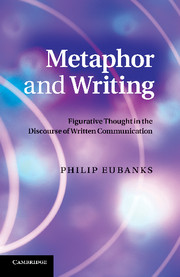Book contents
- Frontmatter
- Contents
- List of figures
- List of tables
- Acknowledgements
- Introduction
- 1 In search of the figurative rhetoric of writing
- 2 The double bind of writer and to write: Graded categories
- 3 Bind upon bind: The general-ability and the specific-expertise views of writing
- 4 Three licensing stories: The literate inscriber, the good writer, and the author writer
- 5 Writing as transcription, talk, and voice: A complex metonymy
- 6 The writing self: Conceptual blends, multiple selves
- 7 Writing to “get ideas across”: The role of the Conduit Metaphor
- 8 Codes and conversations: The other Conduit Metaphor
- 9 Metaphor and choice
- References
- Index
- References
References
Published online by Cambridge University Press: 06 December 2010
- Frontmatter
- Contents
- List of figures
- List of tables
- Acknowledgements
- Introduction
- 1 In search of the figurative rhetoric of writing
- 2 The double bind of writer and to write: Graded categories
- 3 Bind upon bind: The general-ability and the specific-expertise views of writing
- 4 Three licensing stories: The literate inscriber, the good writer, and the author writer
- 5 Writing as transcription, talk, and voice: A complex metonymy
- 6 The writing self: Conceptual blends, multiple selves
- 7 Writing to “get ideas across”: The role of the Conduit Metaphor
- 8 Codes and conversations: The other Conduit Metaphor
- 9 Metaphor and choice
- References
- Index
- References
Summary

- Type
- Chapter
- Information
- Metaphor and WritingFigurative Thought in the Discourse of Written Communication, pp. 198 - 209Publisher: Cambridge University PressPrint publication year: 2010

